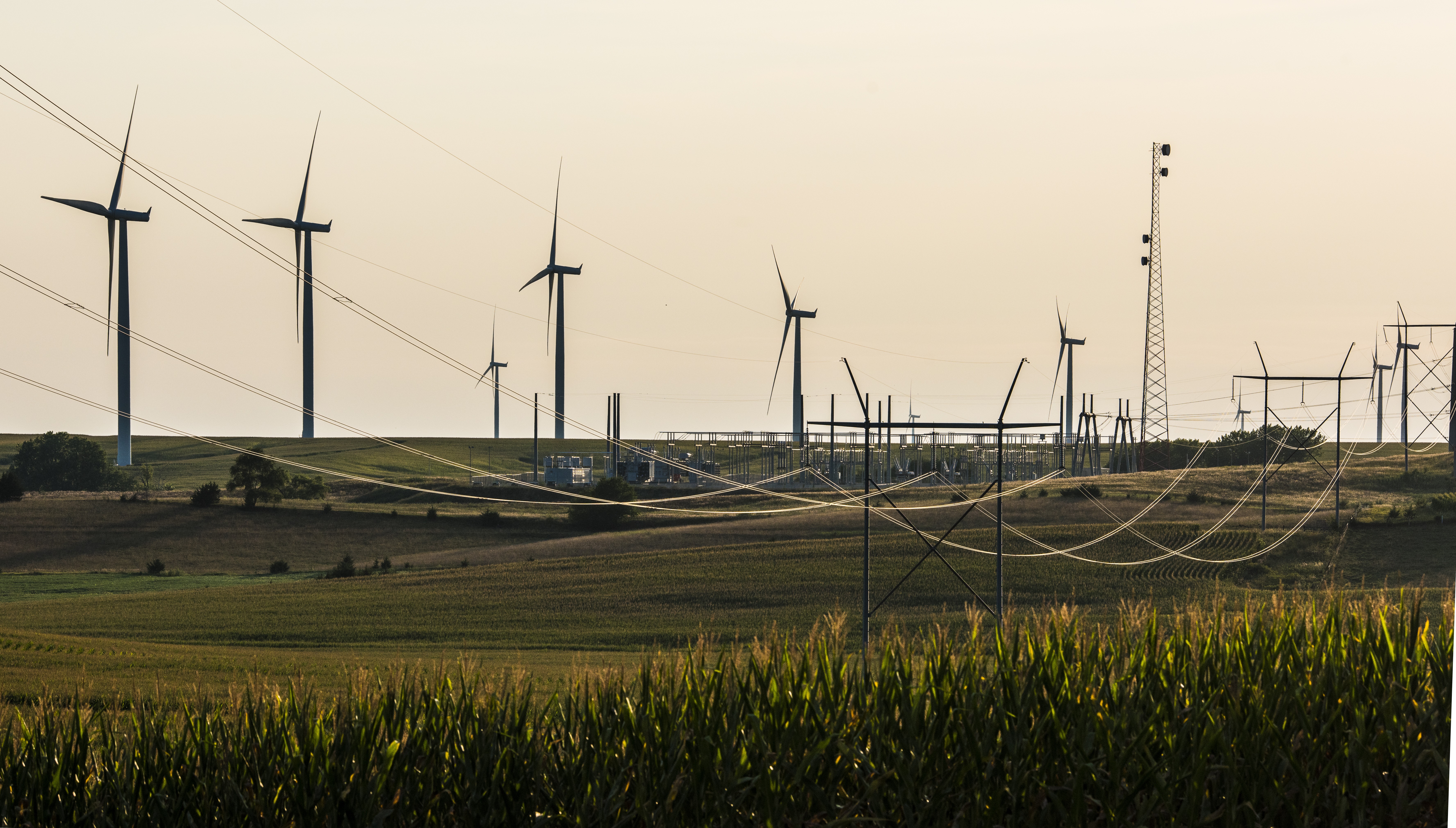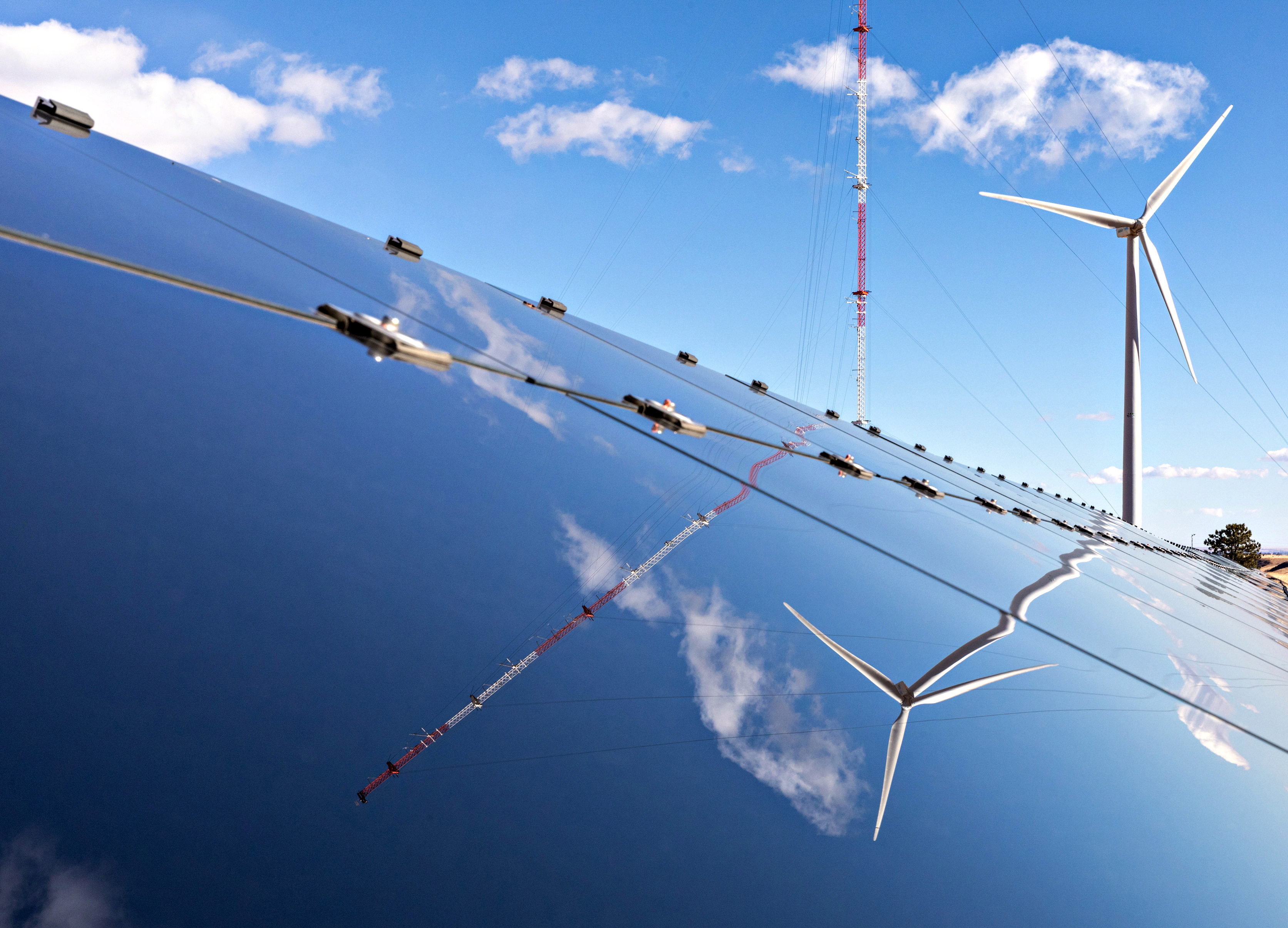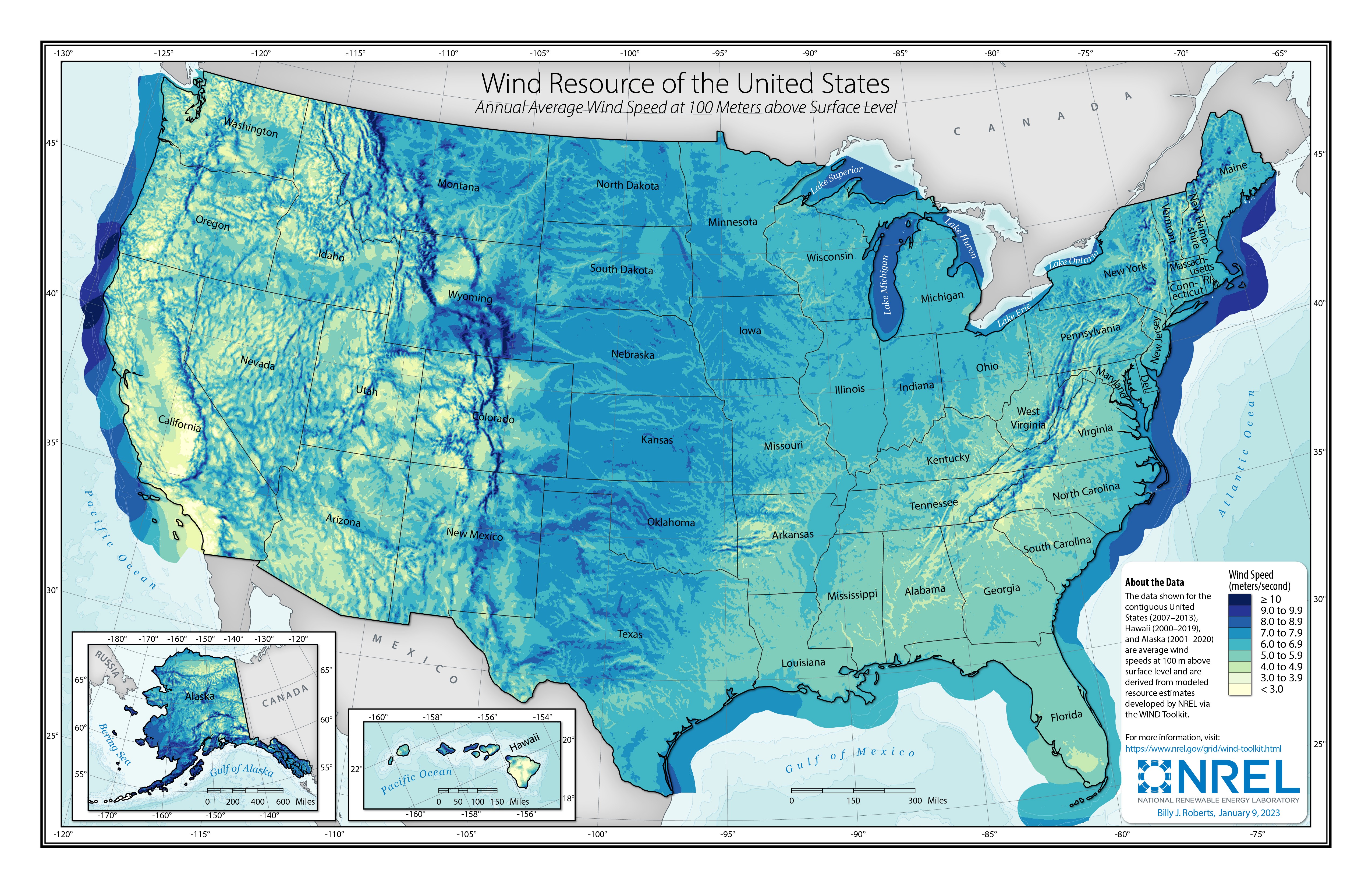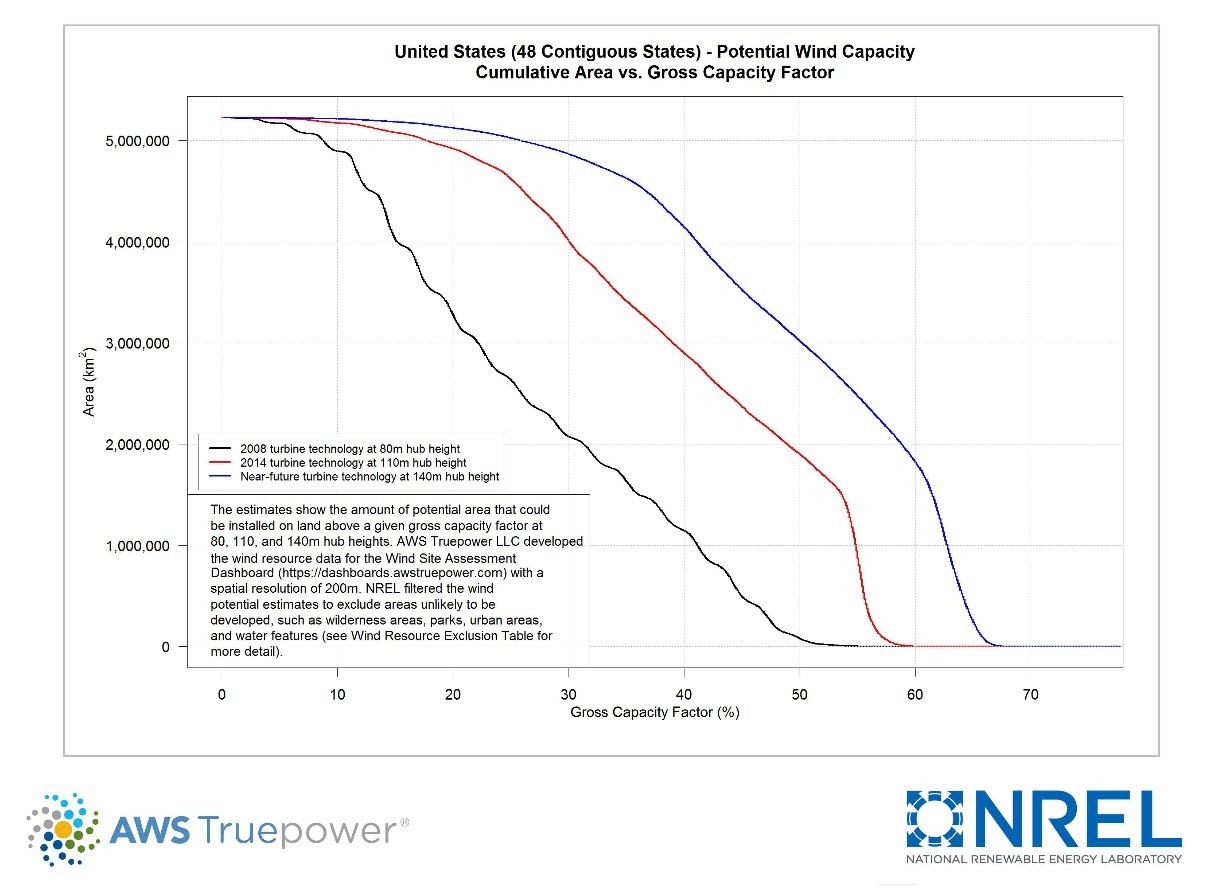Land-Based Wind Energy
What Is Land-Based Wind Energy?
One of the most mature and widely deployed forms of renewable energy, land-based wind energy refers to electricity generated by wind turbines installed on land by companies. Land-based wind turbines harness the kinetic energy of wind moving over land and convert it into electrical energy, usually in larger power plants run by utility companies that distribute that electricity to Americans through the U.S. grid system using transmission systems.
In contrast to those used for land-based wind energy, wind turbines that contribute energy to specific needs, like communities, farms, or homes, are called distributed wind energy. Wind turbines positioned over water fall under offshore wind energy.
The power land-based wind turbines generate can range from 100 kilowatts (usually for distributed purposes) to as much as several megawatts (for utility-scale purposes)—and they’re growing in both capacity and physical size. In 2022, turbines grew to just under 140 meters (~460 feet) tall, from ground to blade tip. This can make them more powerful while using less land area, but the industry faces challenges from size limitations, such as construction and transportation of such large components via trucks and trains, operations and maintenance costs, as well as turbine efficiency. Existing wind power plants can also repower to switch out smaller, older turbines for new ones.

The United States enjoys abundant land-based wind energy resources, making this form of renewable energy an appealing source of electricity for communities throughout the nation. Photo from Dennis Schroeder, National Renewable Energy Laboratory
The United States boasts abundant land-based, utility-scale wind energy resources. According to a 2022 assessment, the nation has 2.2–15.1 terawatts of land-based resource potential, spanning across all 50 states and U.S. territories, which far exceeds the nation’s electricity needs. Wind energy is now the largest renewable power source in the United States and can be viable source of renewable energy in all 50 states by 2050.
Land-based wind energy already makes up a significant share of the nation’s installed wind energy capacity and has the potential to supply the nation with even more energy in the future. In 2022, land-based wind energy projects, which spread across all regions except the southeast, contributed 10% of the United States’ energy generation, with 12 states using wind to provide over 20% of their in-state power generation.
Land-based wind turbines can also work with other renewable energy technologies, such as solar panels, and energy storage in hybrid plants. In 2022, installed U.S. hybrid plants had the capacity to provide 2.6 gigawatts of wind energy.

Hybrid power plants can use multiple forms of renewable energy generation by technologies such as land-based wind turbines and solar panels to produce electricity for the grid. Photo from Werner Slocum, National Renewable Energy Laboratory
What Are the Benefits of Land-Based Wind Energy?
Land-based wind energy offers many advantages, making it key to the nation’s energy future. As of 2022, health and climate benefits, combined, far exceed the levelized cost of wind energy.
Land-based wind turbines are installed across the United States, providing power to the grid, like these 1.5-megawatt turbines in Nebraska. Land leases allow developers to install turbines on farmland, for example, providing economic benefits, as well, to both the utility company and farm owner. Photo from Vern Moore, NMPP Energy
Some of those benefits include:
- Renewable power. Land-based wind energy generates electricity using the country's abundant wind resources without polluting the air.
- Ongoing work helps land-based wind turbines become more reusable with repowering and recyclability.
- Designers, operators, and researchers help to improve coexistence with wildlife.
- Versatility. Land-based wind energy systems can operate in many different types of landscapes, providing power for both urban and remote communities.
- Regulation, resource assessments, community engagement, and other efforts help developers select the best site for a wind energy facility, factor in land use, especially on public land or in federal waters.
- A WINDExchange resource offers economic information on land-based utility-scale wind energy that decision makers can use when considering wind energy development, including community perspectives and siting-related impacts and mitigation strategies.
- Energy independence. Land-based wind energy’s versatility contributes to United States energy independence, or our nation’s ability to meet its energy needs through domestic sources, by harnessing domestic wind resources and reducing reliance on imported energy sources.
- Find out more ways wind energy contributes to energy independence.
- Economic stimulation. Land-based wind energy projects can create jobs across various sectors, stimulate local economies, and offer new income streams for landowners.
- When developing wind farms, county commissioners, local decision makers, economic development corporations, businesses, landowners, and interested community members evaluate local economic challenges, such as regulation and zoning, landownership and transmission, wildlife, project, and community considerations, against benefits, such as revenue, tax relief and community resource support, land leases, and workforce and business growth.
- Communities generating distributed wind energy may also be able to sell extra power produced to utility companies for use on the grid.
- Wind farm owners can offer neighbors voluntary community benefit agreements that offer financial and nonfinancial compensation.
- Land-based wind projects also support the domestic wind energy industry, including U.S. manufacturers, and stimulate the supply chain.
The U.S. Department of Energy’s Wind Energy Technologies Office (WETO) offers significant support to the land-based wind energy industry in the form of funding, expertise, connections, and facilities and tools that help advance everything from research and development efforts on assessing resources to improving, testing, and commercializing technology and finally to installing, operating, and maintaining wind power projects across U.S. lands.


